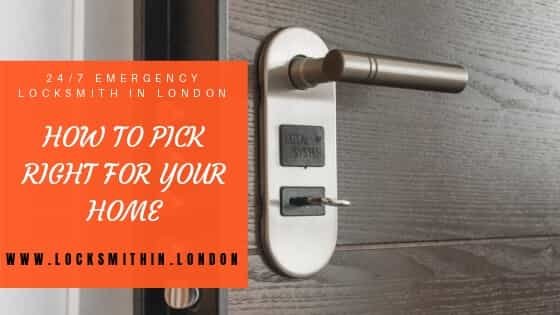Lock Picking: A Guide for Homeowners and Security Awareness
In an ideal world, we’d never lose our keys or accidentally lock them inside the car. But reality bites, and sometimes you find yourself facing a locked door without the right key. While smashing a window might seem like the quickest solution, it’s expensive and poses a security risk. This is where lock picking can come in handy.
Lock Picking: Beyond Criminal Stereotypes
Lock picking is often associated with criminal activity, but it has a legitimate side too. Here are some situations where lock picking skills prove valuable:
- Lost Keys: Misplaced house keys or a car key locked inside the vehicle are common scenarios. A skilled lock picker can open the door without damaging the lock, saving you money on repairs compared to a forced entry.
- Emergency Situations: In urgent situations, like a medical emergency inside a locked room, time is critical. A professional locksmith can quickly access the space using lock picking techniques.
- Understanding Security: Learning basic lock picking principles can enhance your security awareness. It allows you to assess the strength of your own locks and identify potential vulnerabilities.
Important Note: While lock picking knowledge can be empowering, it’s crucial to remember that some locks are highly secure and picking them requires advanced skills and specialized tools. It’s always best to call a professional locksmith for complex situations.
Lock Picking Tools and Techniques
To pick a lock effectively, you’ll need the right equipment. Here’s a breakdown of essential tools and techniques:
-
Lock Picking Kit: A basic kit includes a tension wrench and a lock pick (also called a pick gun). The tension wrench applies pressure to the lock cylinder, while the pick manipulates the internal pins to create the correct alignment for unlocking. In a pinch, a sturdy hairpin can be used as a makeshift pick.
-
Professional Kits: Professional locksmith kits offer a wider range of tension wrenches in various shapes and sizes to accommodate different lock types. They might also include a picking gun, a device that utilizes rapid vibrations to attempt simultaneous movement of all the lock pins.
-
Lock Picking Process: Here’s a simplified overview of the picking process (Disclaimer: This information is for educational purposes only. Attempting to pick locks without permission is illegal):
- Tension Wrench: Insert the tension wrench into the keyhole and apply gentle turning pressure, simulating the key’s rotation.
- Picking Technique: Using the lock pick, carefully manipulate the individual pins within the lock cylinder. As each pin reaches the correct position, you’ll hear a clicking sound.
- Successful Picking: Once all the pins are aligned, the tension wrench should be able to fully turn the cylinder, unlocking the door.
An Alternative Technique: Lock Raking
Lock raking is a less precise technique used for faster entry. It involves a specialized tool called a rake, which resembles a saw with uneven teeth. The rake is inserted and rapidly pulled out, attempting to snag all the pins simultaneously and lift them to the shear line, allowing the cylinder to turn. While faster, raking is less reliable than manipulating individual pins and may not work on all lock types.
Master Locks: A Challenge for Pickers
Master locks are renowned for their robust security mechanisms. Invented in 1921 by Harry Soref, they were the first to utilize laminated layers of solid steel. While they operate on the same basic principles as other pin tumbler locks, their complex design makes them more resistant to picking. Master locks, especially those in combined formats, often require a skilled and patient locksmith to open without causing damage.
Learning Lock Picking: Resources and Considerations
If you’re interested in learning more about lock picking for educational purposes or as a security awareness tool, numerous resources are available:
-
Books and Illustrations: Several publications offer step-by-step instructions on lock picking techniques. Many include helpful illustrations or even videos demonstrating the process. Look for books written by professional locksmiths to ensure accurate information.
-
Videos and Online Tutorials: Many online tutorials and video guides showcase lock picking techniques in action. While some focus on basic principles, others delve deeper into advanced methods.
-
Professional Training: For those considering a career in locksmithing, professional training programs are available. These programs provide comprehensive instruction on various lock picking techniques, security systems, and legal considerations.
A Word on Lock Security
It’s important to remember that most locks, with enough time and skill, can be picked. Therefore, when choosing a lock, prioritize security and select one known for its pick resistance.
Here are some additional security tips:
- Invest in High-Security Locks: Consider using high-security locks for your home
- Upgrade Vulnerable Doors: Solid core doors offer superior security compared to hollow core doors. Replacing a weak door with a more robust option enhances overall security and deters potential break-in attempts.
- Layered Security Approach: Don’t rely solely on locks. Consider a layered security approach that incorporates security systems, window alarms, and proper door jamb reinforcement. This multi-layered approach makes it significantly more difficult for intruders to gain access.
- Maintain Your Locks: Regular lock maintenance is crucial. Lubricate your locks periodically with a silicone-based lubricant to ensure smooth operation and prevent potential sticking or jamming.
- Consider a Lock Change After a Break-In: If you’ve experienced a break-in, it’s wise to replace the locks, even if they appear undamaged. This precaution minimizes the possibility of the intruder returning with a copy of the key.
-
When to Call a Professional Locksmith
While lock picking can be a valuable skill to understand, there are situations where calling a professional locksmith is the best course of action:
-
Complex Locks: Modern high-security locks often incorporate intricate mechanisms designed to resist picking attempts. A skilled locksmith possesses the expertise and tools to handle these advanced lock systems.
-
Emergency Situations: In urgent situations, like a lockout during a power outage or extreme weather conditions, a professional locksmith can provide a prompt and efficient solution.
-
Damaged Locks: If your lock is visibly damaged, picking it might cause further harm and render it inoperable. A locksmith can assess the situation and determine the best course of action, whether it’s repair or replacement.
-
Legal Considerations: Picking locks without permission is illegal. If you’re unsure about the legality of picking a specific lock, always err on the side of caution and contact a professional locksmith.
Conclusion: Lock Picking – Knowledge and Responsibility
Understanding lock picking principles can be a valuable asset for homeowners. It empowers you to assess your own security measures, identify potential vulnerabilities, and make informed decisions about lock selection. However, it’s crucial to remember that lock picking should primarily be used for educational purposes or in emergency situations with proper authorization. For complex lock systems or situations requiring immediate attention, a professional locksmith is always the recommended choice.
-

